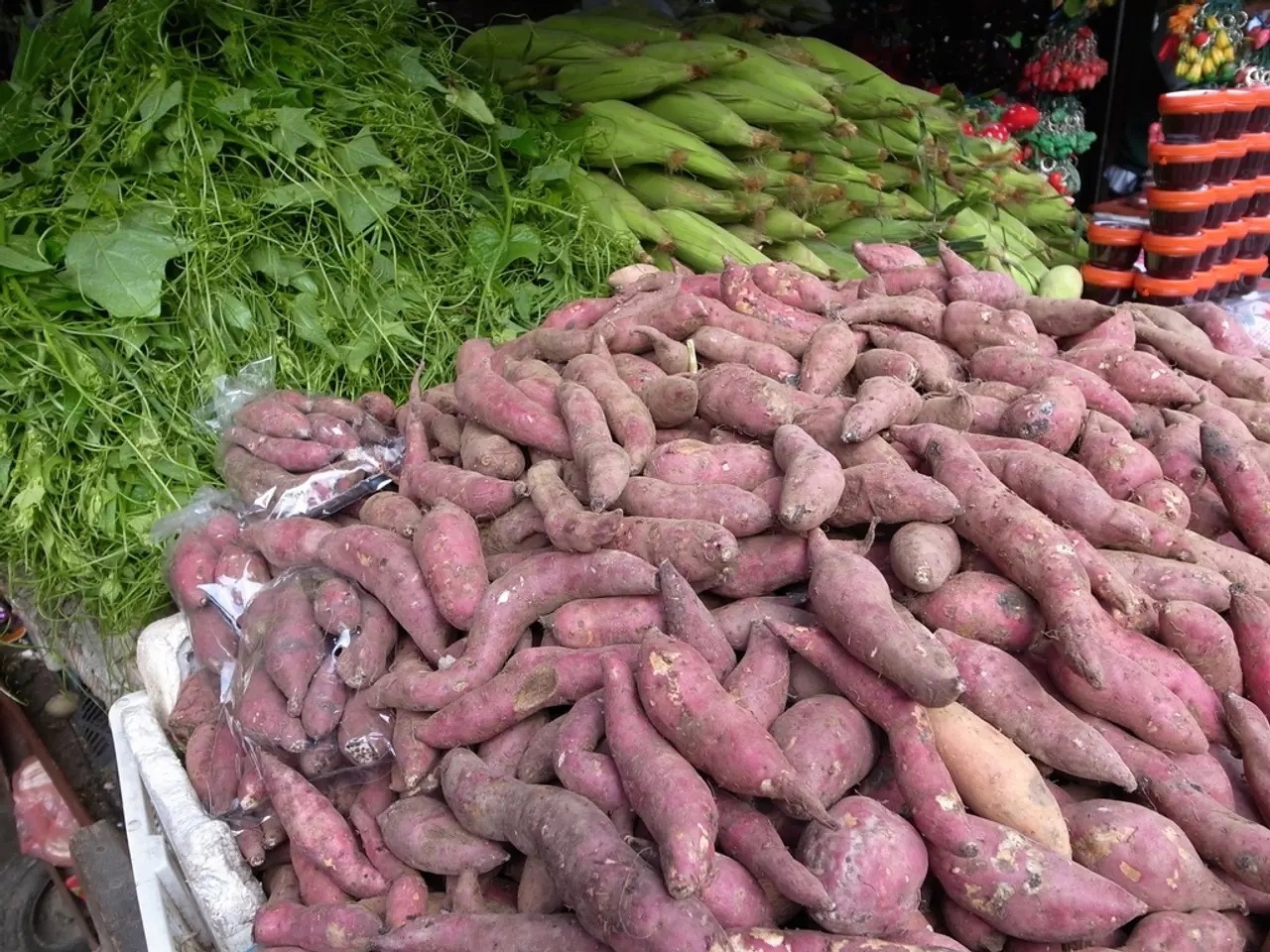Jobs for June: Harvesting Fruits and Vegetables
In the heart of June, the garden is brimming with opportunities for growth and harvest. Here are some tips for harvesting strawberries, new potatoes, and lettuces, ensuring quality produce and ongoing plant health.
Strawberries
Picking strawberries involves timing, technique, and post-harvest care. Harvest strawberries early in the morning when they are cool. Only harvest berries that are fully red and ripe as they do not continue ripening once picked. Pick every other day or about three times a week to catch berries at peak ripeness and avoid overripening.
After finishing the harvest of June-bearing strawberries, renovate the patch by mowing or trimming all old leaves about two weeks after the last harvest. Remove all leaf trimmings to prevent disease. Then water and fertilize well to promote fresh growth and new runners for next year’s crop. Avoid harvesting unripe berries as these will not mature or taste good. Harvest by gently pinching the berry with its stem to avoid damaging the plant.
New Potatoes
New potatoes are harvested when the plants start flowering or shortly after, typically in June depending on planting time and climate. They are smaller, tender potatoes not fully matured. Carefully dig around the plant with a fork or hand tool to avoid breaking or damaging the tubers. Lift the soil and collect the small, tender potatoes. Store new potatoes in a cool, dark place and use quickly as they have thin skins and don’t store well for long periods.
Lettuces
Lettuces can be harvested throughout June depending on the variety. Harvest leaves when they are young and tender, typically 4–6 weeks after planting. For leaf lettuce, harvest the outer leaves first by cutting near the base, allowing the inner leaves to keep growing (cut-and-come-again method). For head lettuce, harvest the entire head once it is firm and of desirable size. Avoid bolting (going to seed), which makes leaves bitter, by harvesting early in the morning before the heat causes the lettuce to bolt.
If green gooseberries have taken on a golden tinge, they will likely be sweet. There's still time in June to make an overgrown plot productive. Adding a half-strength high potassium liquid plant food into the watering can each time you water can help with watering and feeding simultaneously. Sowing French beans early in June allows for a quick growth from seedling to mature plant with beans.
In summary, harvest strawberries frequently when fully ripe and follow post-harvest renovation practices to maintain production. Dig new potatoes carefully around the plants when small and tender. Harvest lettuce leaves or heads when young and avoid heat stress. These practices ensure quality produce and ongoing plant health.
For those looking to recycle pots and trays for second batches of crops, rinsing and scrubbing them with soapy water is possible. Local plant pot recycling schemes can be found by visiting recyclenow.com and entering your postcode. Dobbies Garden Centres have plastic pot recycling bins at many of their branches. Happy gardening!
- Adopting a maintenance routine for home-and-garden plants can help ensure quality produce and a thriving lifestyle, as seen in the harvesting practices for strawberries, new potatoes, and lettuces.
- By regularly harvesting produce such as strawberries, taking care in the harvesting process, and making necessary renovations, one can sustain a productive and rewarding home-and-garden lifestyle. Additionally, reusing and recycling pots and trays is an eco-friendly approach to home-and-garden sustainability.





